#lora fiberglass antenna
Text
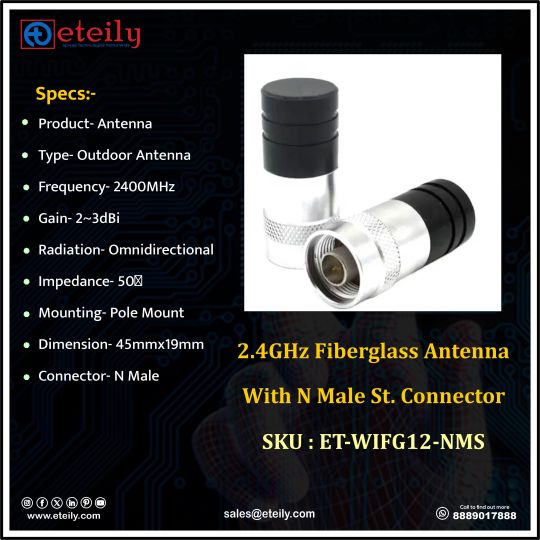
2.4GHz Fiberglass Antenna With N Male St. Connector
A 2.4GHz #fiberglassantenna refers to an antenna designed to operate in the 2.4 gigahertz (GHz) frequency range. This frequency range is commonly used for various wireless communication applications, including Wi-Fi, Bluetooth, and some remote control systems.
Fiberglass antennas are popular for #outdoor applications due to their durability and resistance to weather conditions. The fiberglass material used in the antenna construction provides protection against environmental factors such as rain, sunlight, and wind.
Know More At -
Contact Us - 8889017888 📞
👉Website - https://eteily.com/3-rf-antenna
#telecom#rfantenna#rf#outdoor#antenna#frequency#eteily#connector#omnidirectional#manufacturers#telecomcompany#india#fiberglass
#fiberglass antenna#5.8dbi fiberglass antenna#8dbi fiberglass antenna#permanent fiberglass antenna mast#military surplus fiberglass antenna#lora fiberglass antenna#fiberglass vs aluminum antenna#fiberglass cb antenna#fiberglass antenna boat#fiberglass radio antenna boat#fiberglass marine band antenna#best fiberglass antenna#buy fiberglass antenna#fiberglass cb antenna spring#fiberglass dipole antennas#6 dbi fiberglass lora antenna#dual fiberglass cb antenna#915mhz 6 dbi fiberglass lora antenna#fiberglass pole for antenna
0 notes
Text
youtube
#915 MHz Antennas#Lora Antenna 915mhz#SMA Connector#915MHz LoRa Gateway Antenna#ISM chip antenna#Omni-Directional Antenna#High-Efficiency Antenna#fiberglass omnidirectional outdoor antenna#5 dBi Dipole Antenna#Ceramic Antenna#High gain antenna#UHF 915 MHz RFID ANTENNAS#Spring Antenna#RFantenna#EVcharger#iotloraantenna#Youtube
0 notes
Text
Who's putting up mystery antennas in Utah?
Who’s putting up mystery antennas in Utah?
Strange antennas have appeared in the foothills around Salt Lake City and authorities have no idea what they are or who put them up…first reported by KSLTV 5 in Utah, people first began noticing the antennas a year ago. They’re simple machines made up of a LoRa fiberglass antenna, a locked battery pack, and a solar panel to power it. The Salt Lake City public lands department has been pulling…

View On WordPress
0 notes
Photo

C&T RF Antennas Inc - Outdoor GP Antenna fiberglass omnidirectional whip antenna 868mhz 915mhz high gain waterproof IP67 antenna
#C&T RF Antennas Inc#rf antenna#rf antennas#antenna#antennas#868mhz lora antenna#868mhz ISM antenna#lora 915mhz#lora 915mhz antenna#915mhz lora antenna#915mhz ISM antenna#6' fiberglass antenna#gp-6 antenna#fiberglass cb base antennas#6 foot fiberglass cb antenna#gp-7 antenna#fiberglass antennas#7 foot fiberglass cb antenna#gp 828 antenna#francis fiberglass antennas#fiberglass 800 mhz antenna#gp antenna 80m#laird fiberglass antennas
0 notes
Text
CES17: Arduino Unveils LoRa Modules For The Internet Of Things
WiFi and Bluetooth were never meant to be the radios used by a billion Internet of Things hats, umbrellas, irrigation systems, or any other device that makes a worldwide network of things interesting. The best radio for IoT is something lightweight which operates in the sub-Gigahertz range, doesn’t need a lot of bandwidth, and doesn’t suck down the power like WiFi. For the last few years, a new low-power wireless communication standard has been coming on the scene, and now this protocol — LoRa — will soon be available in an Arduino form factor.
The Primo, and NRF
It’s not LoRa, but the Arduino Primo line is based on the ESP8266 WiFi chip and a Nordic nRF52832 for Bluetooth. The Primo comes in the ever-familiar Arduino form factor, but it isn’t meant to be an ‘Internet of Things’ device. Instead, it’s a microcontroller for devices that need to be on the Internet.
Also on display at CES this year is the Primo Core which we first saw at BAMF back in May. It’s a board barely larger than a US quarter that has a few tricks up its sleeve. The Primo Core is built around the nRF52832, and adds humidity, temperature, 3-axis magnetometer and a 3-axis accelerometer to a square inch of fiberglass.
The Primo Core has a few mechanical tricks up its sleeve. Those castellated pins around the circumference can be soldered to the Alice Pad, a breakout board that adds a USB port and LiPo battery charger.
LoRa
Also on deck at the Arduino suite were two LoRa shields. In collobration with Semtech, Arduino will be releasing the pair of LoRa shields later this year. The first, the Node Shield, is about as simple as it can get — it’s simply a shield with a LoRa radio and a few connectors. The second, the Gateway Shield, does what it says on the tin: it’s designed to be a gateway from other Arduino devices (Ethernet or WiFi, for example) to a Node shield. The boards weren’t completely populated, but from what I could see, the Gateway shield is significantly more capable with support for a GPS chipset and antenna.
A partnership with Cayenne and MyDevices
Of course, the Internet of Things is worthless if you can’t manage it easily. Arduino has struck up a partnership with MyDevices to turn a bunch of low-bandwidth radio and serial connections into something easy to use. Already, we’ve seen a few builds and projects using MyDevices, but the demos I was shown were extremely easy to understand, even if there were far too many devices in the room.
All of this is great news if you’re working on the next great Internet of Things thing. The Primo Core is one of the smallest wireless microcontroller devices I’ve seen, and the addition of LoRa Arduino shields means we may actually see useful low-bandwidth networks in the very near future.
Filed under: Arduino Hacks, news
CES17: Arduino Unveils LoRa Modules For The Internet Of Things was originally published on PlanetArduino
0 notes
Text
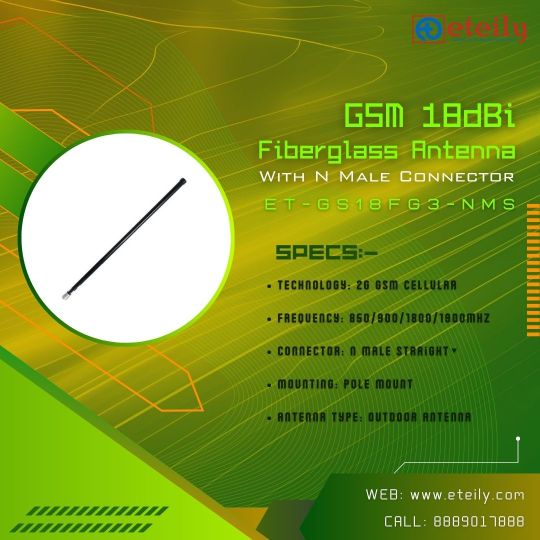
GSM 18dbi Fiberglass Antenna Manufacturers
A fiberglass antenna refers to an antenna element or structure that is made primarily from fiberglass material. Fiberglass is a type of reinforced plastic that is composed of glass fibers embedded in a resin matrix. It's known for its lightweight, durable, and non-conductive properties, which make it suitable for various applications, including antenna construction.
Fiberglass antennas are often used in radio communication, wireless networking, and other applications where an antenna's performance and durability are important. Some key points about fiberglass antennas include:
Non-Conductive: Fiberglass is non-metallic and non-conductive, meaning it doesn't interfere with the electromagnetic signals passing through the antenna. This property can be advantageous in applications where metal antennas might interact with the signals they are transmitting or receiving.
Weather Resistance: Fiberglass is resistant to environmental factors such as rain, sunlight, and temperature variations. This makes fiberglass antennas suitable for outdoor installations where they are exposed to the elements.
Lightweight: Fiberglass is lightweight compared to many other materials used in antenna construction. This can simplify the installation process and reduce the structural load on supporting structures.
Customizable: Fiberglass can be easily molded into different shapes and sizes, allowing for the design of antennas optimized for specific frequency bands and radiation patterns.
Broadband Performance: Depending on the design and construction, fiberglass antennas can be engineered to cover a broad range of frequencies, making them versatile for different communication standards.
Dipole Antennas: One common type of fiberglass antenna is the dipole antenna, which consists of two conductive elements extending in opposite directions from a central feed point. The dipole elements are often made from wire and are supported by a fiberglass structure.
Base Station Antennas: Fiberglass antennas are commonly used in base stations for wireless communication networks, such as cellular networks and Wi-Fi networks. They can provide good signal coverage while being lightweight and unobtrusive.
Radio Amateur (Ham) Antennas: Fiberglass antennas are also popular among amateur radio operators due to their ease of installation, customization, and performance characteristics.
It's important to note that while fiberglass itself doesn't conduct electricity, the conductive elements (such as wires or metal elements) attached to or embedded within the fiberglass structure are responsible for transmitting or receiving the electromagnetic signals. The fiberglass material primarily serves as a supportive and protective structure for these conductive elements.
#fiberglass antenna#5.8dbi fiberglass antenna#8dbi fiberglass antenna#permanent fiberglass antenna mast#military surplus fiberglass antenna#lora fiberglass antenna#fiberglass vs aluminum antenna#fiberglass cb antenna#fiberglass antenna boat#fiberglass radio antenna boat#fiberglass marine band antenna#best fiberglass antenna#buy fiberglass antenna#fiberglass cb antenna spring#fiberglass dipole antennas#6 dbi fiberglass lora antenna#dual fiberglass cb antenna#915mhz 6 dbi fiberglass lora antenna#fiberglass pole for antenna#manufacturer of fiberglass antenna#fiberglass antenna manufacturer#wholesaler of fiber glass antenna#dealer of fiberglass antenna in india#supplier of fiberglass antenna#global supplier of fiberglass antenna#best fiber glass antenna
0 notes
Text
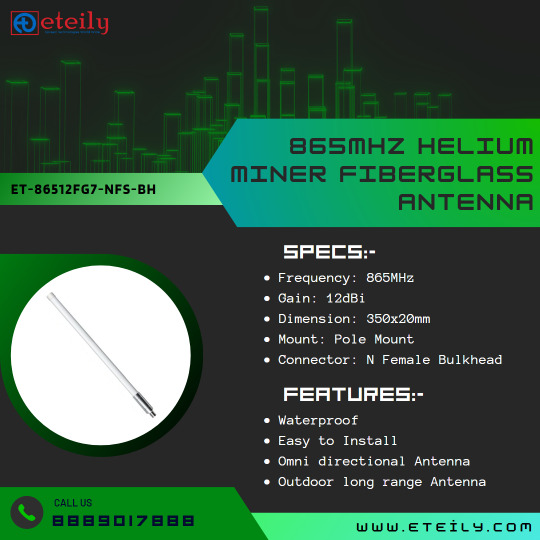
Eteily Technologies India Pvt. Ltd
"865MZ HELIUM MINER FIBERGLASS ANTENNA"
ET-86512FG7-NFS-BH
- Frequency : 865MHz
- Gain : 12dBi
- Dimension : 350x20mm
- Mount : Pole Mount
- Connector : N Female Bulkhead
For More Info - https://eteily.com/3-rf-antenna
Call us : 8889017888
#fiberglass antenna#5.8dbi fiberglass antenna#8dbi fiberglass antenna#permanent fiberglass antenna mast#military surplus fiberglass antenna#lora fiberglass antenna#fiberglass vs aluminum antenna#fiberglass cb antenna#fiberglass antenna boat#fiberglass radio antenna boat#fiberglass marine band antenna#best fiberglass antenna#buy fiberglass antenna#fiberglass cb antenna spring#fiberglass dipole antennas#6 dbi fiberglass lora antenna#dual fiberglass cb antenna#915mhz 6 dbi fiberglass lora antenna#fiberglass pole for antenna#manufacturer of fiberglass antenna#fiberglass antenna manufacturer#wholesaler of fiber glass antenna#dealer of fiberglass antenna in india#supplier of fiberglass antenna#global supplier of fiberglass antenna#best fiber glass antenna
0 notes
Text

#fiberglass antenna#5.8dbi fiberglass antenna#8dbi fiberglass antenna#permanent fiberglass antenna mast#military surplus fiberglass antenna#lora fiberglass antenna#fiberglass vs aluminum antenna#fiberglass cb antenna#fiberglass antenna boat#fiberglass radio antenna boat#fiberglass marine band antenna#best fiberglass antenna#buy fiberglass antenna#fiberglass cb antenna spring#fiberglass dipole antennas#6 dbi fiberglass lora antenna#dual fiberglass cb antenna#915mhz 6 dbi fiberglass lora antenna#fiberglass pole for antenna#manufacturer of fiberglass antenna#fiberglass antenna manufacturer#wholesaler of fiber glass antenna#dealer of fiberglass antenna in india#supplier of fiberglass antenna#global supplier of fiberglass antenna#best fiber glass antenna
0 notes
Text
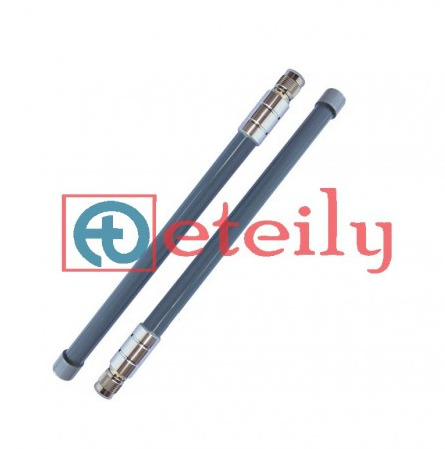
#fiberglass antenna#5.8dbi fiberglass antenna#8dbi fiberglass antenna#permanent fiberglass antenna mast#military surplus fiberglass antenna#lora fiberglass antenna#fiberglass vs aluminum antenna#fiberglass cb antenna#fiberglass antenna boat#fiberglass radio antenna boat#fiberglass marine band antenna#best fiberglass antenna#buy fiberglass antenna#fiberglass cb antenna spring#fiberglass dipole antennas#6 dbi fiberglass lora antenna#dual fiberglass cb antenna#915mhz 6 dbi fiberglass lora antenna#fiberglass pole for antenna#manufacturer of fiberglass antenna#fiberglass antenna manufacturer#wholesaler of fiber glass antenna#dealer of fiberglass antenna in india#supplier of fiberglass antenna#global supplier of fiberglass antenna#best fiber glass antenna
0 notes
Text

#rf antenna cable#rf antenna pcb#fiberglass antenna#rf antenna#RF Antenna in telecom#rf antenna price#rf antenna manufacturers in india#rf antenna amplifier#rf antenna australia#rf antenna buy online#GSM Antenna#rf antenna companies#coaxial cable rf antenna#4g antenna#5G antenna#WLAN antenna#iot lora antenna amplifier#iotdevices#iot antenna#iotsolutions
0 notes
Text
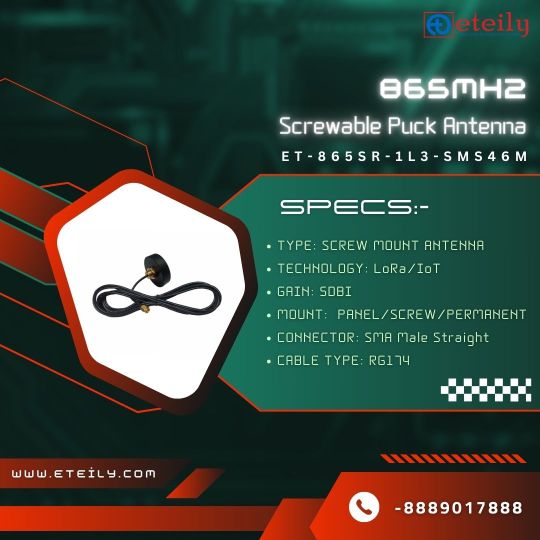
865 MHz Screwable Puck Antenna Manufacturers in India 2023
A screwable puck antenna operating at 865 MHz is likely designed for applications in the Ultra High Frequency (UHF) band. This frequency range is commonly used for RFID (Radio Frequency Identification) systems, IoT (Internet of Things) devices, and wireless communication in various industries.
The term "puck antenna" usually refers to a small, disc-shaped antenna with a wide radiation pattern. It's often used when a relatively compact and omni-directional antenna is needed for wireless communication purposes.
Here are some points to consider regarding a screwable puck antenna operating at 865 MHz:
Frequency: The antenna is optimized to operate at 865 MHz, which is the center frequency of the UHF band. The design and dimensions of the antenna elements are tuned to efficiently radiate and receive signals at this specific frequency.
Screwable Design: The "screwable" aspect likely refers to the antenna's mechanism for attaching to a device or a mounting point. A screwable antenna typically has a threaded connector that allows it to be securely attached to a compatible port or fixture.
UHF Applications: The UHF band, including the 865 MHz frequency, is commonly used for applications like RFID systems (for tracking and identification of objects), sensor networks, asset tracking, and remote monitoring in industrial, logistics, and retail sectors.
Omnidirectional Radiation Pattern: Puck antennas are often designed to have an omnidirectional radiation pattern, meaning they radiate and receive signals equally in all directions around the antenna. This property makes them suitable for scenarios where communication needs to occur from various angles.
Matching and Impedance: To ensure optimal performance and efficient power transfer between the antenna and the device, it's important that the antenna's impedance is matched to the impedance of the device's RF circuitry. Proper impedance matching minimizes signal reflections and maximizes signal strength.
#rf antenna#rf antenna manufacturers in india#4g antenna#rf antenna price#5g antenna#gps antenna#iot lora antenna#rf antenna amplifier#gps tracker antenna#rf antenna in telecom#rf antenna cable#rf antenna pcb#fiberglass antenna#RF Antenna in telecom#rf antenna australia#rf antenna buy online#GSM Antenna#rf antenna companies#coaxial cable rf antenna#5G antenna#WLAN antenna#IRNSS antenna#GPS antenna#4G antenna#RF antenna#IOT LORA antenna#manufacturer of gps antenna in india#supplier of GPS antenna#wholesaler of GPS antenna in india#5g antenna manufacturer
0 notes
Text
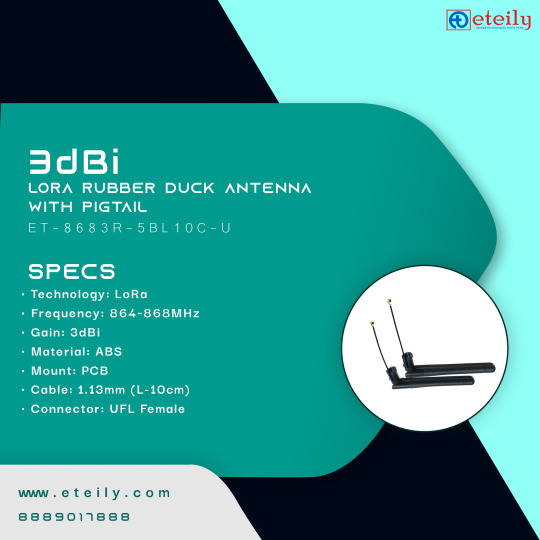
3dBI LORA RUBBER DUCK ANTENNA WITH PIGTAIL
A 3dBi LoRa rubber duck antenna with a pigtail refers to an antenna designed for LoRa (Long Range) wireless communication technology. Let's break down the different components:
LoRa: LoRa is a low-power, long-range wireless communication technology that enables long-distance data transmission with low power consumption. It is often used in applications such as Internet of Things (IoT) devices, smart agriculture, and industrial automation.
Rubber duck antenna: A rubber duck antenna is a type of omnidirectional antenna that is commonly used with portable devices due to its compact size and flexibility. It is typically made of rubber or a similar material and has a flexible whip design.
Pigtail: In the context of antennas, a pigtail refers to a short length of coaxial cable used to connect the antenna to the device. It serves as an interface between the antenna and the radio transceiver.
The "3dBi" specification indicates the antenna's gain, which measures the ability of the antenna to concentrate the radiated signal in a specific direction. A higher gain value generally means a stronger signal in that direction.
So, a 3dBi LoRa rubber duck antenna with a pigtail would be a compact, flexible antenna designed for LoRa communication, providing a gain of 3dBi. The pigtail allows for easy connection to a device with a compatible coaxial antenna connector.
#IoT Lora LPWAN Antenna#IoT Lora LPWAN antenna in india#IoT Lora LPWAN antenna manufactures#IoT Lora LPWAN antenna manufactures in india#IoT Lora LPWAN antenna suppliers in india#IoT Lora LPWAN antenna wholesalers in india#manufactures Adhesive Antenna supplier in pune#suppliers of 5dBi Adhesive Antenna#wholesalers of 915MHz 5dBi Rubber Duck Antenna#IoT Lora LPWAN antenna in Ahmedabad#IoT Lora LPWAN antenna in delhi#10dBi Fiberglass Antenna in mumbai#IoT Lora LPWAN antenna in chennai#IoT Lora LPWAN antenna in bangalore#IoT Lora LPWAN antenna in bangaluru#IoT Lora LPWAN antenna in Hyderabad#IoT Lora LPWAN antenna in Kolkata#IoT Lora LPWAN antenna in Pune#868MHz 5dBi Adhesive Antenna Suppliers In Ahmedabad#IoT Lora LPWAN antenna in ahmedabad price#best manufactures868MHz 5dBi Adhesive Antenna in ahmedabad#IoT Lora LPWAN ahmedabad#IoT Lora LPWAN antenna price#IoT Lora LPWAN Antenna at Best Price in India#IoT Lora LPWAN antenna manufacturers in delhi#IoT Lora LPWAN antenna manufacturers in mumbai#IoT Lora LPWAN antenna manufacturers in chennai#IoT Lora LPWAN antenna manufacturers in bangalore#IoT Lora LPWAN antenna manufacturers in hyderabad#IoT Lora LPWAN antenna manufactures in kolkata
0 notes
Text

#fiberglass antenna#rf antenna#RF Antenna in telecom#rf antenna price#rf antenna cable#rf antenna manufacturers in india#rf antenna amplifier#rf antenna australia#rf antenna buy online#GSM Antenna#rf antenna companies#coaxial cable rf antenna#4g antenna#5G antenna#WLAN antenna#IRNSS antenna#GPS antenna#4G antenna#RF antenna#IOT LORA antenna#manufacturer of gps antenna in india#supplier of GPS antenna#wholesaler of GPS antenna in india#5g antenna manufacturer#manufacturer of RF Antenna in india#Antenna manufacturer in india
0 notes
Text

#fiberglass antenna#rf antenna#RF Antenna in telecom#rf antenna price#rf antenna cable#rf antenna manufacturers in india#rf antenna amplifier#rf antenna australia#rf antenna buy online#GSM Antenna#rf antenna companies#coaxial cable rf antenna#4g antenna#5G antenna#WLAN antenna#IRNSS antenna#GPS antenna#4G antenna#RF antenna#IOT LORA antenna#manufacturer of gps antenna in india#supplier of GPS antenna#wholesaler of GPS antenna in india#5g antenna manufacturer#manufacturer of RF Antenna in india#Antenna manufacturer in india#supplier of antenna
0 notes
Text
#fiberglass antenna#rf antenna#RF Antenna in telecom#rf antenna price#rf antenna cable#rf antenna manufacturers in india#rf antenna amplifier#rf antenna australia#rf antenna buy online#GSM Antenna#rf antenna companies#coaxial cable rf antenna#4g antenna#5G antenna#WLAN antenna#IRNSS antenna#GPS antenna#4G antenna#RF antenna#IOT LORA antenna#manufacturer of gps antenna in india#supplier of GPS antenna#wholesaler of GPS antenna in india#5g antenna manufacturer#manufacturer of RF Antenna in india#Antenna manufacturer in india#supplier of antenna
0 notes
Text

5dBi Rubber Duck Antenna
#fiberglass antenna#rf antenna#RF Antenna in telecom#rf antenna price#rf antenna cable#rf antenna manufacturers in india#rf antenna amplifier#rf antenna australia#rf antenna buy online#GSM Antenna#rf antenna companies#coaxial cable rf antenna#4g antenna#5G antenna#WLAN antenna#IRNSS antenna#GPS antenna#4G antenna#RF antenna#IOT LORA antenna#manufacturer of gps antenna in india#supplier of GPS antenna#wholesaler of GPS antenna in india#5g antenna manufacturer#manufacturer of RF Antenna in india#Antenna manufacturer in india#supplier of antenna
0 notes